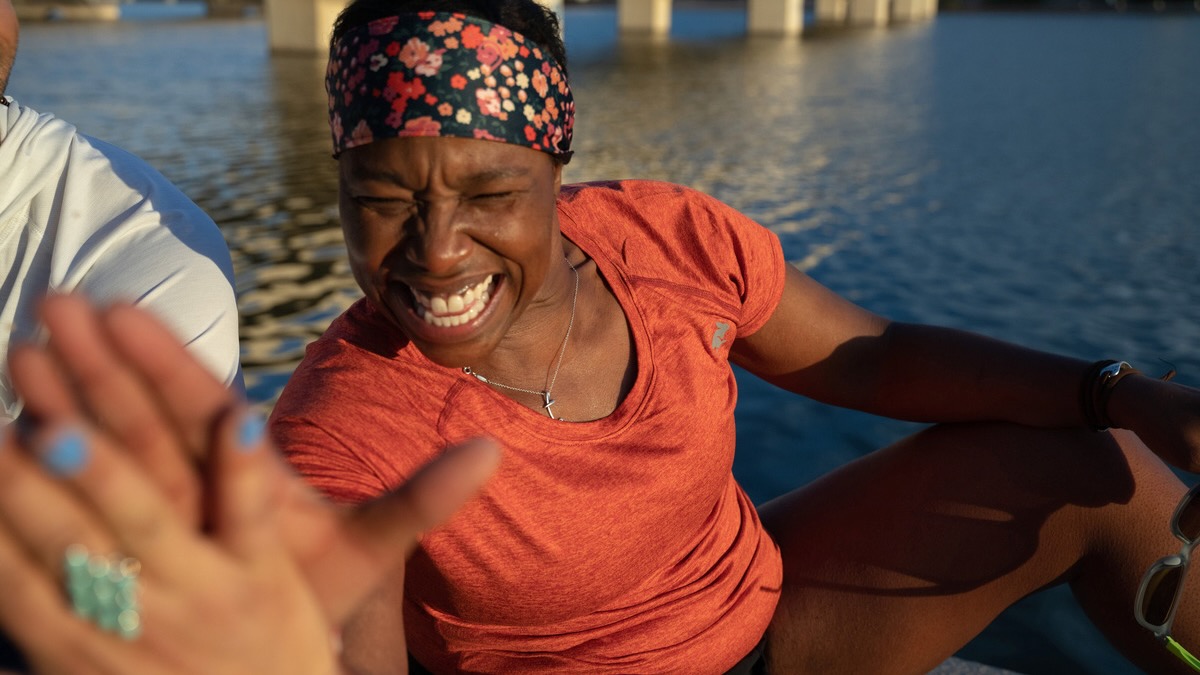Tiffany Gayle Chenault had never been much of a runner. But when she lost her mother to cancer in 2011, she was so numbed with grief that she felt she was barely “living in the world.” So, when a friend asked her to join a 5-mile relay team, she said yes without much thought.
“I didn’t know what I had gotten myself into,” Chenault recalled of race day in 2013. “This was all new and different … I even pinned my bib number way above my chest, close to my neck.”
She started running. Soon, the endorphins kicked in. She moved faster than in training, and took walk breaks when she needed. She finished the race, but, really, “it was just the start.”

Running helped Chenault “get my spirit back,” and she soon found herself regularly lacing up her kicks. A sociology professor at Salem State University in Massachusetts, Chenault had long been a keen observer of her surroundings. She began paying attention to those she saw running throughout her Boston neighborhood and in 5K and 10K road races. More importantly, she noticed who she didn’t see.
“Why don’t I see anyone who looks like me?” asked Chenault, who is Black. “Why is running so white?”
And while running has been popular in the U.S. since the 1960s, it’s mostly been presented by the running industry as a white, middle-class activity.
Representation matters
Chenault began running longer distances, training for half marathons and marathons to honor her mother’s memory. She set a goal to run a half marathon in every state by 50.
She also wanted to find out what motivated Black women to run, and why they seemed to be absent from recreational running spaces. Chenault was aware of the Kenyan women who dominated distance races and Black American and Caribbean women sprinters who starred in international competition, but rarely saw images of Black women who ran for recreation and health.
Running had become vital to her own well-being—“a spirit regenerator”—and Chenault knew its benefits could be important for other Black women, who face a higher risk of diabetes, obesity and heart disease due to systemic racism and other factors.
She spoke with Black women runners at races across the country and members of the Boston chapter of Black Girls RUN!, where she serves as a co-ambassador. Chenault didn’t stop there. As a sociologist, she probed deeper, launching a survey to hear from Black women runners about what kept them going and the obstacles they faced.
The reasons proved to be as diverse as the 200 or so women who responded. Like Chenault, some started running to find comfort after losing a loved one or other life changes. Others ran for their health, to release stress or find community.
Her research also highlighted financial burdens: Those without resources to travel, buy gear and access running networks faced substantial barriers to participation.
The intersection of race and gender also plays a role. While women across racial and ethnic backgrounds worry about safety while running, Black women runners were concerned that their racial background would make them a target for harassment or violence.
“I Am a Runner”
The most important factor encouraging Black women to run, however, was community. Chenault said the running industry can make Black women and other underrepresented runners feel they must meet presumed standard criteria to be a runner, whether it’s a thin body type or owning special gear.
It took a while before Chenault encountered a more diverse running field. At her eighth half marathon in New Jersey, she saw hundreds of participants of color, many from groups like Black Girls RUN!, an organization that encourages Black women to make fitness and healthy living a priority.
“The feeling that I got, that sense of belonging, that was the moment I went from researching to saying, ‘I am a runner’,” she said.
Through her blog “Run I See,” Chenault continues to chronicle her running experiences. By the end of 2019, she had run half marathons in 46 states. The COVID-19 pandemic halted her plan to hit all 50 states by 2020, and Chenault also faced another challenge that year—a breast cancer diagnosis caught in the earliest stages. She completed treatment last summer and soon after, finished No. 47 in Portland, Oregon. Over Memorial Day weekend this year, she finished No. 48 in Idaho, and then her 49th half marathon in Wyoming in early June. That puts her on track for her finale in 2023 in Hawaii.
“I’ve learned a lot on this journey,” she said. “I found beauty and strength in running. It offers me space and time I wouldn’t always get. Being a runner is part of my identity because I found people who looked like me.”
Editor’s note: Black Girls RUN! Foundation is a grantee partner of the REI Cooperative Action Fund (www.REIFund.org), which directly supports organizations promoting justice, equity and belonging in the outdoors.
